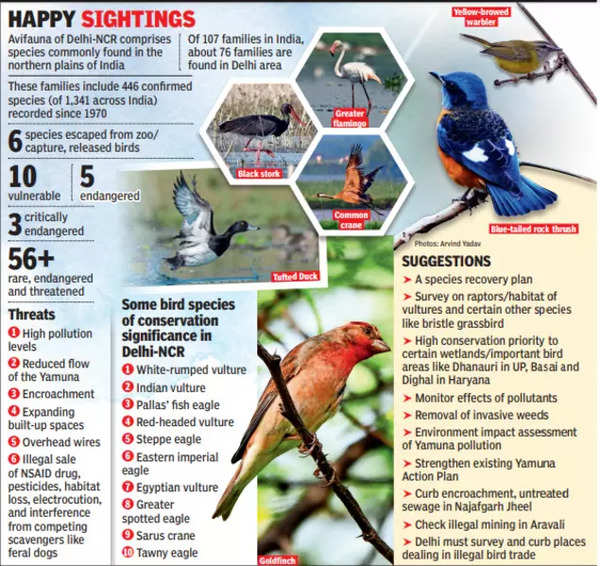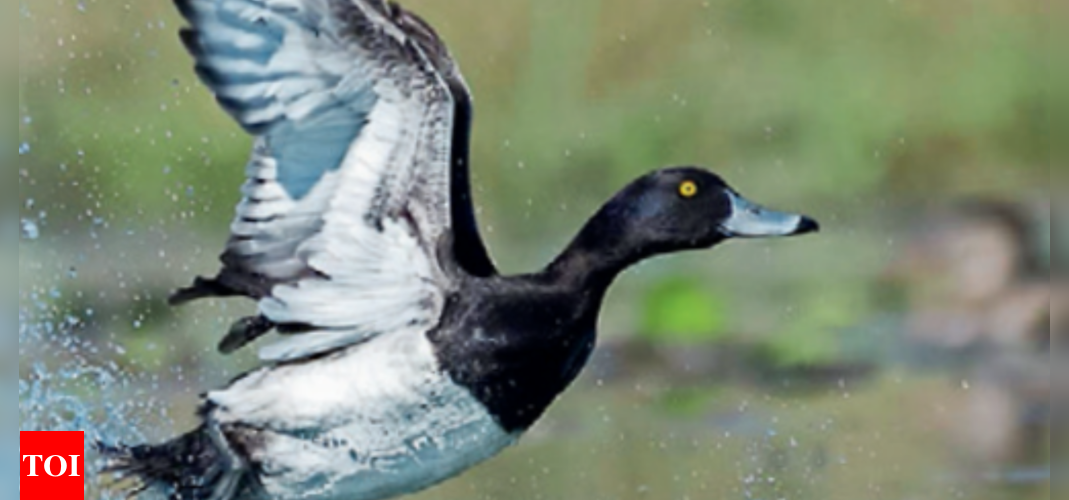
A report by the three bodies confirmed the presence of 446 species out of 1,341 found in the country in Delhi-NCR, making the region an area of tremendous birding importance.The region also hosts 57 rare, endangered and threatened (RET) birds. The report mentioned that saving the Aravalli biodiversity was also key to saving the birds.
The conservation action plan stated that the city would need several short, medium and long-term surveys and management plans that would span three, five and ten years, all targeted at preserving avian density, combat habitat loss of local and migratory birds, curb trafficking and check disease.
The report outlined 14 programs under which actions and surveys would be required. Some of these areas are conservation of protected areas with high avian diversity, conservation of migratory birds, surveillance and monitoring of diseases, impact of developmental projects and other anthropogenic activities on avian diversity and habitats and curbing illegal trafficking.
Mahendiran Mylswamy, a senior scientist with SACON in Coimbatore, said: “We have prepared the Delhi-NCR action plan, the ecosystems, habitats and landscapes. The agencies concerned will have to initiate steps for the conservation of avifauna.”
The conservation action plan mentions that Delhi is one of the major hubs for illegal trafficking of owls. “The enforcement agencies lack awareness and identification of owls, which is a major concern,” the report said. The state repository of avian reference samples and generation of databases on DNA and feather structures for forensic purposes should be done for species that are targets of such trade.
The report recommended conducting an environmental impact assessment, considering the severity of air and water pollution and climate change that impact birds and their wintering sites, and stressed on more behavioural studies on urban avifauna.
It also raised a concern over decrease in Delhi’s moisture index, indicating that a “change in weather pattern is likely to intensify loss in biodiversity, affect plant growth patterns and increase forest fires and abrupt insect outbreaks.”
“Out of the 446 bird species, ten are vulnerable, five are endangered or critically endangered,” the report said. “Conservationists consider several other species with small populations and restricted geographic ranges rare. RET bird species are prone to extinction for various reasons, including habitat loss, poaching and environmental changes. These species require urgent conservation measures,” the report said. Among the birds that need immediate action are the white-rumped vulture, Palla’s fish eagle, Sarus crane, Indian skimmer, bristled grassbird and common pochard.
According to the report, the aquatic landscape surrounding the Yamuna in NCR is under constant anthropogenic pressure, affecting the river’s water quality. Industrial waste, plastic waste and untreated domestic sewage are primary reasons for water deterioration.
“Though many studies estimated the pollution on the river Yamuna in Delhi, there is a lack of proper studies indicating the cause and its effect on the avian species. There is a need to conduct an environmental impact assessment of water pollution on the birds and strengthening the management of the existing Yamuna Action Plan,” the report said.
For the Aravalli landscape, the report highlighted that invasive plant species “deteriorate the soil cover by taking up moisture content and competing with native plants by decreasing their growth.”
The Ridge, Asola Bhatti Wildlife Sanctuary and Mangarbani (sacred grove) constitute the Aravalli forest in the region which supports high biodiversity.
The strategic approach to enhance the avifauna biodiversity in the Aravalli landscape would need a long-term study (10-year duration) to be implemented, followed by short-term seasonal weed removal and replanting of native trees. “As the Aravalli forest range is the last remaining wild cover in NCR, it should be given high conservation priority and be taken up in the first phase,” the report said.
For conservation of avian diversity in urban areas, the report recommended that planning and managing urban green spaces like gardens, parks and corridors will help conserve urban avifauna.



